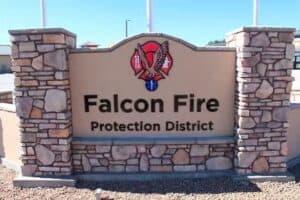The week of Oct. 9 through Oct. 15 marks the 100th anniversary of Fire Prevention Week. This yearís theme, ìFire wonít wait. Plan your escape.ôî encourages people to take simple but important actions to keep themselves and their families safe from home fires.History of Fire Prevention WeekFire Prevention Week is observed each year during the week of Oct. 9. It commemorates the Great Chicago Fire, which ignited on the evening of Oct. 8, 1871, but did most of its damage the following day. The fire burned more than 2,000 acres of the city, which seems relatively modest compared to todayís conflagrations. It was also far smaller and less deadly than the 1.2 million-acre Peshtigo Fire in Wisconsin that occurred the same day. However, the devastation in Chicago was historic.Amid significant drought and in a city of predominantly wooden buildings, sidewalks, and bridges, the wind-driven fire destroyed more than 17,400 structures, killed more than 250 people and left 100,000 citizens without homes, according to the National Fire Protection Association (NFPA). The fire has anecdotally been attributed to Mrs. OíLearyís cow knocking over a lantern in a barn. Although the fire started in the vicinity of the OíLeary barn, the Chicago History Museum website states the actual cause was officially never determined.On the 40th anniversary of the Great Chicago Fire in 1911, the Fire Marshals Association of North America (now known as the International Fire Marshals Association) decided to commemorate the fire by promoting fire prevention. President Woodrow Wilson issued the first National Fire Prevention Day proclamation in 1920. The NFPA began sponsoring Fire Prevention Week as a public observance in 1922; and, in 1925, President Calvin Coolidge proclaimed Fire Prevention Week as a national observance. Every U.S. president since then has signed a proclamation for Fire Prevention Week, making it the longest-running public health and safety observance in the U.S., according to the NFPA.Focus on fire prevention and safetyEvery year, Fire Prevention Week promotes a different fire safety theme. The 2022 theme of ìFire wonít wait. Plan your escape.î is not exactly new, having first been used in 1991. However, there is a good reason for its reappearance. While the overall number of fires and fire-related injuries trended down between 2010 and 2019, the number of fire deaths increased, according to U.S. Fire Administration data. The NFPA states that 74% of all U.S. fire deaths occur in homes. Additionally, despite advances in fire safety technology, people are more likely to die in a home fire today than they were in 1980. Yet an NFPA survey revealed that only one in three American households have created and practiced a home escape plan.In a NFPA Journal article published Aug. 1, Lorraine Carli, vice president of the NFPA Outreach and Advocacy division, said, ìThe way homes are built and the makeup of their contents create hotter, faster-moving fires, leaving occupants as little as two minutes to escape from the time the smoke alarm sounds. Three decades ago, when the ìFire Wonít Wait Öî theme first appeared, occupantsí escape time in the event of a home fire was closer to seven to 10 minutes.îWith so little time to escape a home fire, smoke alarms are a key component of home escape plans. The NFPA recommends that smoke alarms be installed on every level of a home, including the basement, and outside each sleeping area. Smoke alarms should be tested once a month and batteries should be replaced every year. Smoke alarms should be replaced every 10 years or when the end-of-life alarm sounds.More information about Fire Prevention Week, its 100th anniversary and fire safety and home escape planning is available online at https://www.nfpa.org/fpw. Here are some tips to start creating a home escape plan:ï Draw a map of the house, including locations of all doors and windows.ï Determine at least two ways out of every room when possible. Make sure all doors and windows open easily.ï Designate an outside meeting place where everyone will meet. This can be a tree, mailbox or light pole a safe distance away from the house.ï Discuss the plan with everyone who lives in the home.ï Practice home fire drills at least twice a year, at night and during the day.Fires escape planning for wildfiresIn her article, Carli also noted the relevance of escape planning in todayís wildfire environment. ìThis yearís theme is all-encompassing, and the message of escape planning extends to wildfires ó an enormous and growing threat in many areas of the country. For millions of Americans, knowing how and when to evacuate in advance of a wildfire are essential. Regardless of where you live and who you live with, knowing what to do if a fire strikes can mean the difference between life and death.îMore information about wildfire evacuation planning can be found at https://www.ready.gov/wildfires.Stay connected with the Falcon Fire Protection DistrictWebsite: http://www.falconfirepd.orgFacebook: Falcon Fire DepartmentTwitter: @FalconFireDeptNextDoor.com




